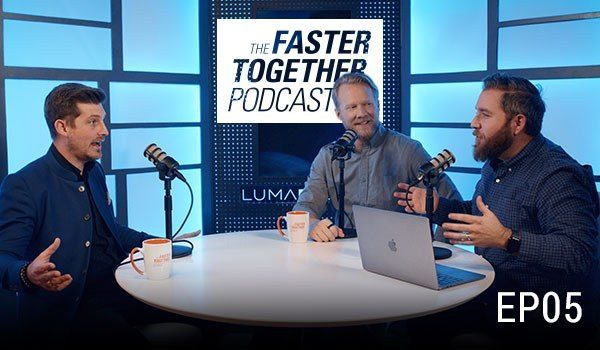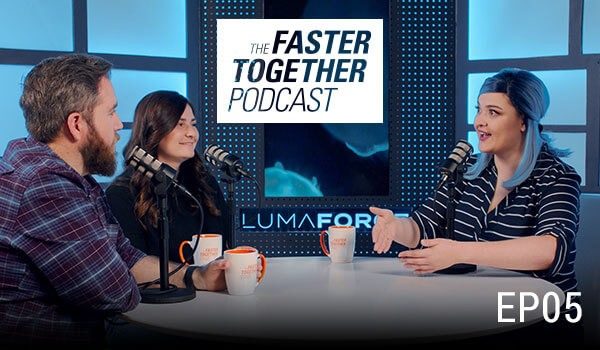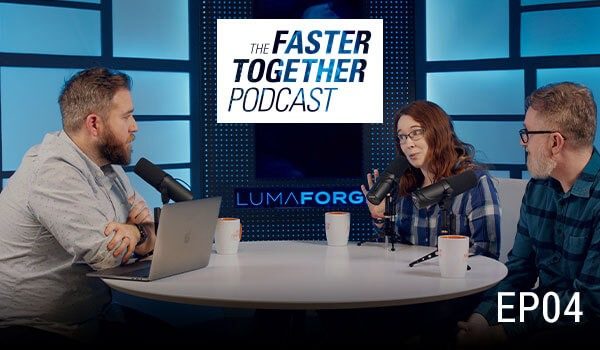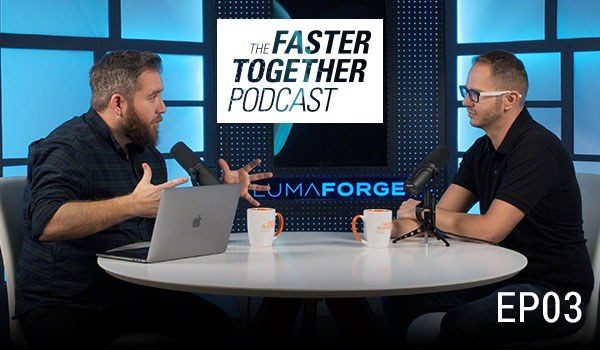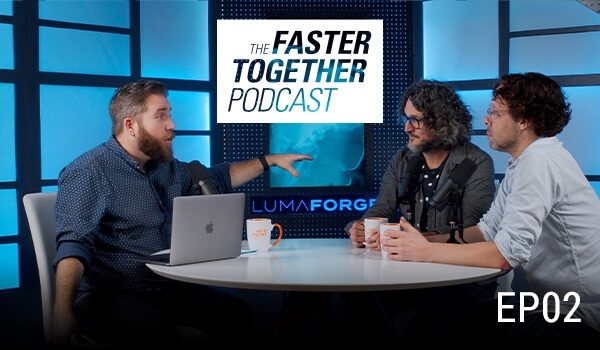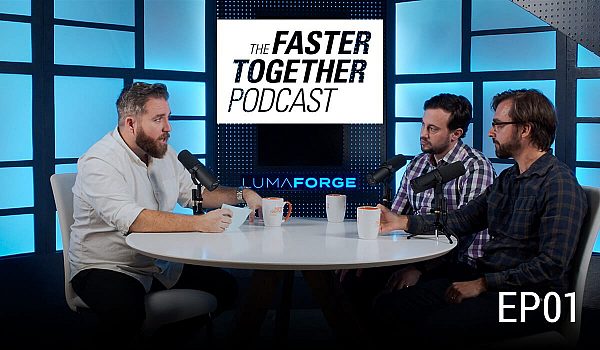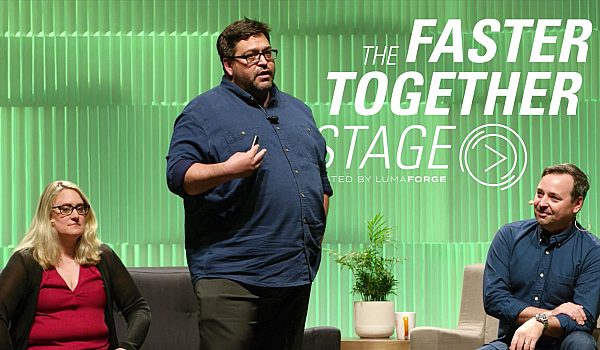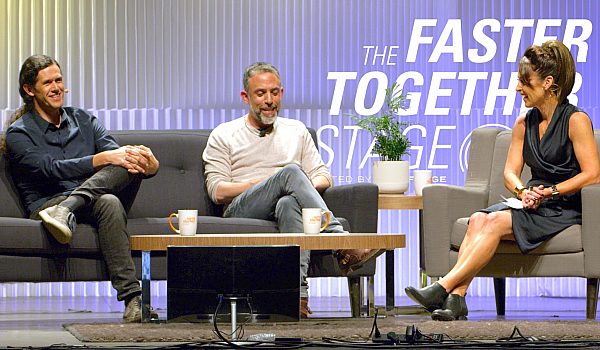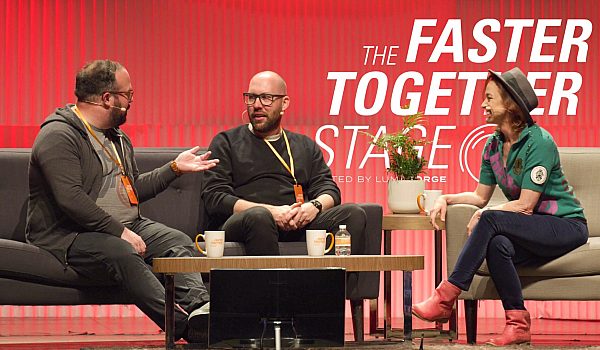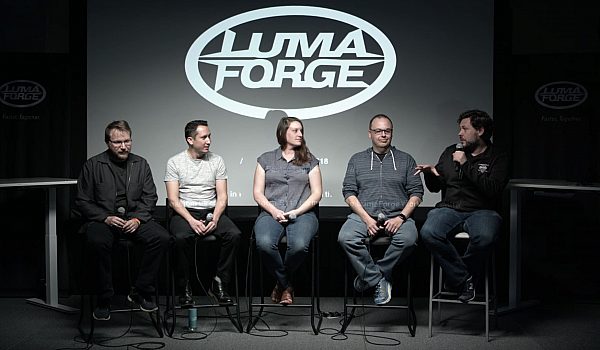Brad Olsen made a documentary about Final Cut Pro X. Tired of hearing nay-saying, he decided to tell the app's full story. "Off the Tracks" covers the poorly received launch of FCPX. Then, it covers the development and adoption of Final Cut across a diverse user base.
- Hey, everybody. It's really fun to be here at NAB. It's two years ago, actually, that I approached Sam Esman and told them my idea for this project and it's kind of unreal that, you know, I had this idea to make a movie about the crazy people who use Final Cut Pro X and love it so much and then I can stand here on stage and tell you we did it, we made it and I'm happy with the result. It's definitely a movie that people would probably tell me, "Why would you spend the time and energy on that? "That's gonna cost too much money." It's just, you know, there's a lot of reasons to not make a movie and I feel like and I felt like this was an opportunity to actually, you know, tell a story I was passionate about and I figured I could do it so here's the reasons why I made this documentary 'cause I'm sure a lot of people wonder, "Why did you devote two years of your life to this?" And the first is controversy is always really good for storytelling and the release of Final Cut X upset a lot of people and there's a lot of polarizing opinions about it and controversy, especially now online with social media, just draws a lot of attention and the other reason, I think the theme of this documentary is about change and how people are affected by it, how they react to it, and I just thought that was, from a intellectual conversation standpoint, an interesting theme to explore and, of course, I thought that there was a huge gap in education about Final Cut Pro X.
It seemed like there's a lot of misinformation and a lot of people who didn't understand what it was and why they made it and there's a lot of people even telling me that Apple had stopped making it in 2011 and I was sort of tired of hearing that from people when I enjoyed using the software and I was proving time and time again that I could edit with it and, of course, I am very passionate about it, as is a whole community of people that wanna get that message out there and it was an awesome opportunity to network and meet a lot of great people in the networks, everyone was having conversations, like Chris Fenwicks has his podcast and I enjoyed listening to that and Sam Esman was putting on these events and these were people that had a lot of similar thoughts as I did and I wanted to get to know them and it was really an opportunity to prove to a wider audience, more people outside of my clients and the independent filmmakers in Utah that I had some skills and abilities and I could make a movie and so I had to prove that to myself as well. And here's some technical information, just because I think people like knowing little technical facts.
There was over 50 hours of footage in the end that I had to cool and get through. 30 hours of that was just interviews that I actually shot myself. It was shot primarily on the Blackmagic Cinema Camera 'cause that was the camera I had available to me but we also shot on a variety of other formats. I rented a C300 Mark II, had the opportunity to shoot some interviews with the Red Raven and I got footage and we'll go over a little bit more about that but I got footage from the Final Cut community in a variety of formats as well and here's a few third party tools that actually were really helpful in my workflow starting with Lumberjack from the very beginning. Phillip helped me a lot with getting that going and Color Finale because I did this before the release of 10.4 and also Color Finale still has the ability to use a tangent ripple, which I bought, so I'm looking forward to Final Cut implementing some surface control, motionVFX actually did some titles for me and I used a lot of their plugins and things and X2Pro and Pro Tools for audio mixing and Frame.io's how we shared projects back and forth and collaborated.
The first edit was 93 minutes, it was actually six separate projects at that time, like, Final Cut projects, timelines, and it was just talking heads and there was, like, no B-roll and that was actually a really scary thing because like, "What do I cover all of this with?" And I ended up cutting it down to 77 minutes in the end and that was actually after shooting more stuff after the rough cut so that was an interesting process. So collaboration, you know, I'm here at the Faster, Together stage, we're talking about collaboration, how did I collaborate on this film? My two primary collaborators, in terms of editorial, was Richard Taylor and Alan Seawright. Richard Taylor came on board really early on and offered his assistance to be a second pair of eyes and to cut down things and I met Alan a year ago, actually, at NAB at this same Faster, Together event and we happened to be, not live too far from each other in Utah, and so Alan wanted to really make me uncomfortable and put me in a position where I had to rethink my movie and not take it for granted the way it was structured and we're gonna get into that a little deeper.
So, how did I collaborate with people? I'd love to be able to tell you that I had a LumaForge Jellyfish that we were able to share stuff with, I did not, and it wouldn't have really worked for this unless I'm unaware that, is there a cable that that can reach from Utah to Maryland? I don't think so or even Salt Lake to Provo wherever Provo is, that's where Alan's from. So, we ended up just duplicating media the old fashioned way and mailing drives back and forth and we would share stuff on Frame.io and tried to keep on the same page as much as possible and then, like I said before, the Final Cut community, as I started making notes that this is the B-roll that I need, they really stepped up and provided a lot of shots that I couldn't get myself and that was one of the exciting things about a project like this is I could reach out to a community of filmmakers and they were able to provide me with a variety of things that I would have never been able to go do. Like I said, use Frame.io. So this is a quick timeline of events, two years ago, like I said, I came up with the initial concept, I started skyping with Sam, Sam didn't believe I was serious at first, I badgered him for three months, I would send him outlines and I made a little teaser trailer from found footage on the internet and then finally, in August, he's like okay, you seem like you're really serious about this so I'll contact the people you wanna interview because I know all of them and they just are gonna be at the creative summit so why don't we interview them all there?
At the same time, over in Europe, Ronnie Cortens got word of what I was doing through Sam and decided to get a few interviews that actually Philip Hodges conducted those interviews in September so in October, that's really when I started hitting the ground running on this project and actually getting footage and that was an exciting thing and then a month later, I went to L.A. and actually pretty quickly after that, thanks to powerful organizational tools and because I had an idea of what I wanted to put together, I had a 93 minute rough cut by the end of 2016. With no B-roll and graphics and a lot of stuff. And it's true that process, as I was refining the movie, and I'd send stuff to Richard Taylor, there was actually this crazy event happened where I got an interview with Randy Ubillos and that was an amazing opportunity and that really took the project to the next level and I was able to go to NAB last year and maybe some of you were there and I showed the first 15 minutes of the film, I released a trailer and then I ran a Kickstarter. Originally I asked, 'cause I'd shot everything and I could edit myself, I just asked for $10,000 and the community, like, really stepped up to the plate and I ended up getting $26,000, which was really overwhelming and showed to me that there was some demand in interest in what I was doing. I got some interviews in Europe and then I did a first kind of pass at it at the creative summit and then I locked the edit early this year and I was able to release the Kickstarter backers so that is a brief overview of that.
Briefly, this is the first outline, actually, I actually did lots of outlines, this was the culmination of those and I had split it out into six different segments and those became six different projects in Final Cut Pro X and the way I was able to organize everything into those projects very quickly, if you look on the left here, this is my library and the smart collections in my library and I created a smart collection for each section of the documentary and, you know, I was able to use keywords from the interviews of whatever they were talking about to feed those smart collections and use ratings to basically pull it down to this is just the stuff that I want to cut together. So before even putting anything in a timeline, I had already taken, ya know, hours of material and shrunk it down to, like, about 20 minutes per section. Here's the quick evolution of the project.
So I mentioned there's six different sections but they each have their own kind of beginning, middle and end and they felt like episodes and I really wanted to make one, big movie and that's where Alan came into play. Richard had helped me trim things down and kind of, you know, each of these timelines but Alan was like, "Hey, you need "to shake things up "a little bit," so we started rearranging things and what came from that process in the end was a standard three-act structure. There's a lot more story beats and little things in between but this is the basics of it and, obviously, the launch of Final Cut Pro X became act one but also sections from change and ecosystem and community ended up in act one as well and then all of this ended up in act two and actually, this is one of the big changes, this video literacy was a section that was originally in act, like, was at the end of the movie but I realized, in order to build up, and have one consistent arc that really the ultimate message of this was the idea that everybody can make movies now and so I realized that I needed to introduce that throughout the project from earlier in the film and then, of course, video literacy and future made their way into act three and just to give you an idea of how Alan and I did this process, we actually have a behind the scenes clip that I'm excited to show you of how we went from these six sections to a more cohesive film. Basically, ya know, we just gave the script to my daughter and the transcript, printed it out and she just tore it up and then we looked at the floor and we said "Oh, okay," then we rethought everything.
One of the really important things here is that is kind of what it feels like when you've spent all this time carefully crafting your story and somebody comes along and takes a bulldozer to it but it is entirely necessary to making the film better, I feel like. I have become frustrated and here's actually the actual evolution of the different timelines. As an editor who'd worked for clients and directors and different independent feature films, the people I was frustrated with were the ones who couldn't see their movie from a different perspective and refused to deviate from the script and the projects that I was the most proud of were the ones that we were able to take a look at things from a new perspective.
And what I love about the Magnetic Timeline in that process is it does make it really easy to just try things, to just move something around and not feel like you're gonna break your sound effects or your music or things like that and you're gonna be able to tell a better story and this has become easier and easier to do between the organization and the Magnetic Timeline, I think Final Cut makes this process more approachable and people can start experimenting more and tell better stories and this movie, at the end of the day, is ultimately about the idea that it is easier than ever to go out and tell your story, that you don't need to wait for a big production budget, you can find ideas, like I did, and you can go out and just make a movie and I'm hoping that, ya know, as a product of that message that it self-preaches, it's kind of a internal thing and I'm just hoping that everybody who sees it becomes inspired by that and we can start seeing more stories from more people as we move into the future, at a high quality. So, thank you.

 Mobile
Mobile
 Tower
Tower
 R24
R24
 Builder
Builder
 Manager
Manager
 Connect
Connect
 Kyno
Kyno
 Media Engine
Media Engine
 Remote Access
Remote Access
 Support
Support
